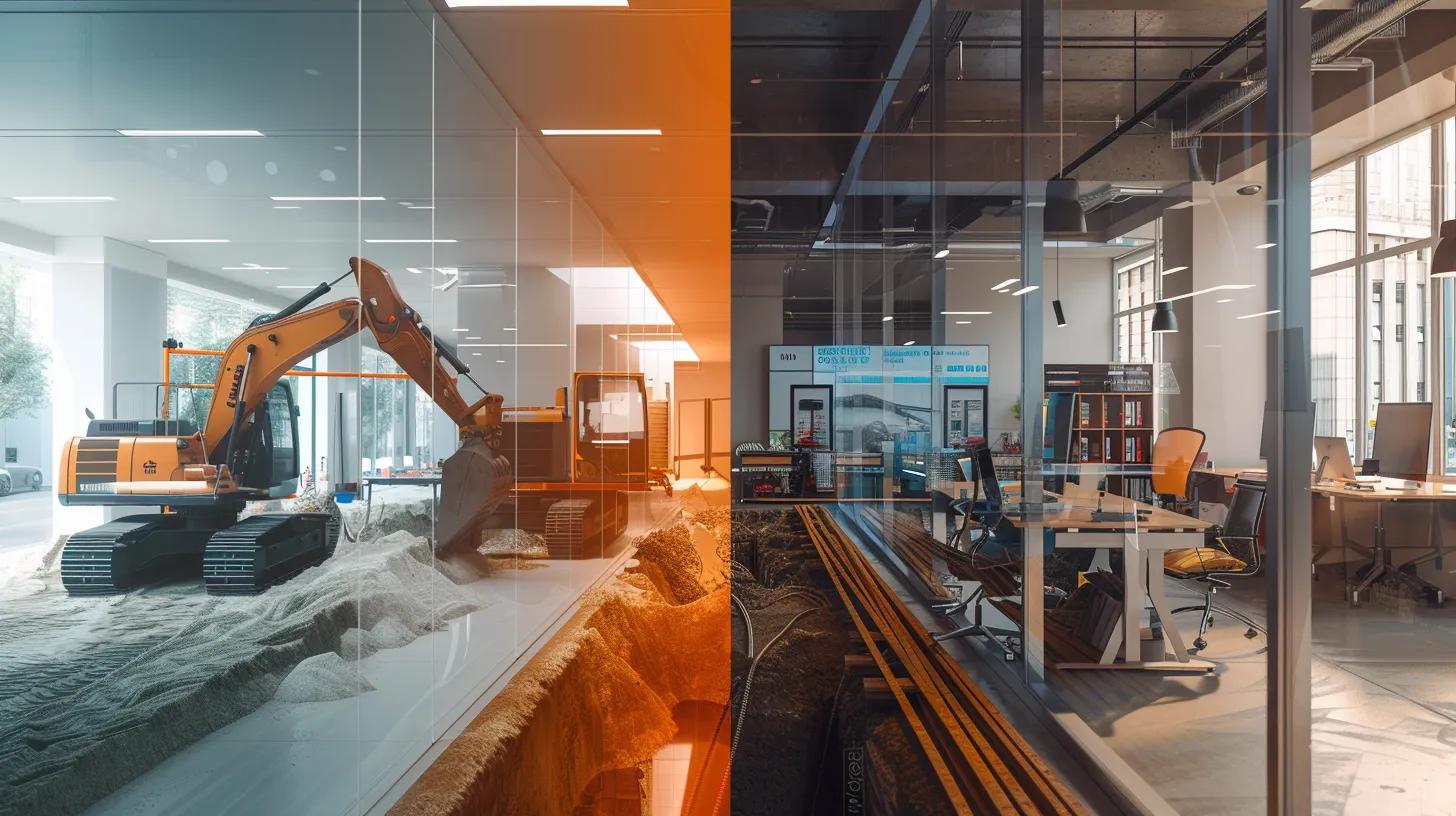
My Experience with Drain Replacement Methods in Tampa

In Tampa, drain replacement services are critical for maintaining the health and functionality of sewer and drainage systems. Homeowners and businesses often face the decision between traditional methods and modern trenchless solutions. This article provides comprehensive answers to common questions regarding these methods, discusses benefits and drawbacks, compares costs, and explains the processes involved. By understanding the differences, customers can make informed choices tailored to their property needs and local Tampa regulations.
What Are Traditional and Trenchless Drain Replacement Methods?
Traditional and trenchless drain replacement methods differ primarily in their approach. Traditional replacement involves excavating large trenches to remove and replace pipelines, while trenchless technology repairs or replaces pipes with minimal digging. This overview sets the stage for a detailed comparison of how each method addresses common drainage problems such as sewer line issues and soil instability in the Tampa Bay area.
How Does Traditional Drain Replacement Work in Tampa?
Traditional drain replacement in Tampa requires extensive digging along the damaged pipe’s route. Contractors expose the old pipe, remove debris, and install new piping with proper bedding and backfilling. Although this proven method effectively addresses severe deterioration or misalignment, it disrupts landscaping, driveways, and other structures, often necessitating additional restoration work.
What Is Trenchless Drain Replacement and How Is It Done?
Trenchless drain replacement minimizes excavation using techniques such as pipe lining or pipe bursting. With pipe lining, a resin-coated tube is inserted into the old pipe and cured to form a new lining. Pipe bursting involves breaking the old pipe while pulling a new one into place. These methods are popular in Tampa for their efficiency, reduced property restoration costs, and lower environmental impact by preserving lawns, driveways, and nearby structures.
Which Drain Replacement Methods Are Commonly Used in Tampa?
In Tampa, traditional methods are frequently chosen when pipes are severely deteriorated or when layouts are too complex for trenchless repair. Conversely, trenchless techniques are favored for moderately damaged pipes and for properties where minimizing disruption is essential. Contractors use advanced leak detection and imaging to decide the most appropriate method for each situation.
What Are the Main Advantages and Disadvantages of Traditional vs. Trenchless Drain Replacement?

Understanding the pros and cons of each approach is essential when selecting a drain replacement technique. Both methods have unique benefits as well as limitations related to cost, duration, environmental impact, and restoration needs.
What Are the Benefits of Traditional Drain Replacement?
Traditional drain replacement provides direct access to the entire drainage system, enabling thorough inspections and complete removal of old, corroded pipes. This method allows contractors to address additional issues like soil stabilization and is often more cost-effective when trenchless solutions are not viable. Its long history of reliable performance reassures many property owners despite the invasive nature.
What Are the Drawbacks of Traditional Drain Replacement?
The major drawback is the disruptive excavation process that can damage landscaping and other property elements. Traditional methods require more labor, time, and subsequent restoration work, which can lead to higher cleanup costs and prolonged inconvenience, particularly in urban areas where preserving property aesthetics is crucial.
What Are the Benefits of Trenchless Drain Replacement?
Trenchless methods greatly reduce the need for excavation, thereby protecting landscaping, driveways, and structures. They typically allow for faster project completion and lower overall labor and restoration costs. Environmentally friendly benefits include reduced waste and lower carbon emissions from minimal heavy equipment use. These advantages are attractive for homeowners prioritizing efficiency and property preservation.
What Are the Limitations of Trenchless Drain Replacement?
Trenchless technology may not be suitable for pipes that are severely collapsed or if the surrounding soil conditions are poor. The initial cost per foot can be higher due to specialized equipment and expertise. Additionally, technical limitations may prevent the rehabilitation of very long or large-diameter pipes. In such cases, traditional methods might be necessary to ensure comprehensive pipe replacement.
How Do Costs Compare Between Traditional and Trenchless Drain Replacement in Tampa?
Cost considerations play a major role when selecting a drain replacement method in Tampa. Factors such as labor, materials, permitting fees, and restoration work influence overall expenses.
What Factors Influence Traditional Drain Replacement Costs?
Costs for traditional drain replacement depend on the extent of pipe damage, labor intensity, and material expenses. Heavy excavation, equipment use, and post-project landscaping restoration add to the expense. Predictability in cost is often higher when extensive damage is evident, though unexpected issues like buried utilities can increase expenditures.
How Is Trenchless Drain Replacement Priced?
Trenchless replacement pricing is typically based on the length of pipe being rehabilitated and the complexity of the work. Although the per-foot cost may be higher, reduced excavation and restoration needs often result in lower total costs. Tampa companies combine advanced trenchless technology with expert assessments to ensure competitiveness and cost efficiency.
Are There Long-Term Cost Differences Between the Two Methods?
Over the long term, trenchless methods may lead to fewer maintenance issues and lower recurring expenses due to their durable installation. Traditional methods, while effective, might incur additional repair or restoration costs over time. For Tampa property owners, the choice may depend on balancing upfront costs against projected maintenance expenses.
Which Drain Replacement Method Is Best for Tampa Homeowners and Businesses?

The optimal drain replacement method in Tampa depends on property type, location, and the specific drainage problem.
How Do Property Type and Location Affect Method Choice?
Residential properties with established landscaping and limited open space often benefit from trenchless replacement, which preserves aesthetics and minimizes disruptions. Commercial properties or older buildings with complex, outdated systems might require traditional methods for a complete overhaul. Urban areas with high density typically favor trenchless techniques due to easier access and reduced excavation needs.
When Is Traditional Drain Replacement Recommended?
Traditional replacement is recommended when pipes are severely compromised by corrosion, root intrusion, or misalignment. It is particularly useful when soil conditions are unstable or when pipe sizes are too large for efficient trenchless repair. Older Tampa properties often need this thorough approach to resolve longstanding drainage issues.
When Is Trenchless Drain Replacement the Preferred Option?
Trenchless replacement is ideal for pipes with moderate damage where minimizing excavation is a priority. It is well suited for urban settings and properties with high aesthetic value. Faster turnaround times and reduced environmental impact make trenchless technology attractive for home and business owners seeking minimal disruption.
How Do Tampa Regulations and Permits Impact Method Selection?
Local regulations and permit requirements can dictate the choice between traditional and trenchless methods. Traditional projects may need more extensive permits due to the invasive nature of the work, while trenchless processes often enjoy streamlined approvals. Compliance with Tampa building codes and environmental guidelines is critical and should be managed by experienced, licensed contractors.
What Is the Typical Timeline and Process for Each Drain Replacement Method in Tampa?
Project timelines vary significantly between traditional and trenchless methods, affecting planning and daily operations.
How Long Does Traditional Drain Replacement Usually Take?
Traditional projects in Tampa can take anywhere from several days to weeks. The process includes planning, permitting, extensive excavation, pipe removal, installation, and subsequent restoration. Delays may occur due to unforeseen challenges such as buried utilities or unstable soil conditions, impacting business and residential routines.
What Is the Timeline for Trenchless Drain Replacement Projects?
Trenchless projects are typically completed faster—often within one to three days for residential jobs. Minimal excavation and efficient preparatory assessments help streamline the process, reducing disruption and overall labor costs.
What Should Customers Expect During the Drain Replacement Process?
Customers can expect an initial system assessment, followed by either full-scale excavation or minimal trenchless intervention. Throughout the project, professionals provide updates, manage safety and permits, and address any issues promptly. Clear communication ensures that property owners remain informed from start to finish.
How Can Tampa Residents Prepare for Drain Replacement Services?

Preparation helps ensure a smooth drain replacement project, regardless of the chosen method.
What Steps Should Homeowners Take Before Traditional Drain Replacement?
Homeowners should clear the area around affected pipes by moving vehicles, outdoor furniture, and other obstructions. Informing neighbors and securing necessary permits can prevent delays. Discussing the restoration plan with the contractor also helps manage post-project cleanup and landscaping repairs.
How to Prepare for Trenchless Drain Replacement?
For trenchless projects, ensure that access points such as manholes and cleanouts are unobstructed. Document the current condition of driveways and lawns with photos, and discuss any needed temporary adjustments with the service provider. Maintaining communication and readiness for minor disruptions facilitates a smoother process.
What Questions Should Customers Ask Their Drain Replacement Contractor?
Key questions include the specific technology used, expected project timeline, potential property damage, and details on post-project restoration. Inquiring about warranties, licensing, insurance, and the permitting process helps build trust and ensures that the selected contractor meets all regulatory and quality standards.
What Are Common Myths and Facts About Traditional and Trenchless Drain Replacement in Tampa?
Dispelling myths with factual information is crucial for making an informed choice.
Is Trenchless Drain Replacement Always More Expensive?
Although trenchless replacement may have a higher per-foot cost, reduced excavation and restoration expenses often lower the overall expenditure compared to traditional methods.
Does Traditional Replacement Cause More Property Damage?
While traditional methods involve significant excavation that can damage property, experienced contractors can mitigate this risk with proper restoration protocols.
Can All Drain Problems Be Fixed Trenchlessly?
Not all drainage issues are suitable for trenchless repair. Severe collapses or complex obstructions may necessitate traditional replacement, making an on-site professional assessment critical.
Frequently Asked Questions
Q: How do homeowners decide between traditional and trenchless drain replacement? A: Homeowners should consider the severity of pipe damage, property type, budget, and potential disruptions. A professional assessment helps determine the best method.
Q: What are the environmental benefits of trenchless drain replacement? A: Trenchless methods minimize excavation, reduce restoration waste, and lower carbon emissions, making them more environmentally friendly.
Q: Are there warranties provided for both traditional and trenchless repairs? A: Many reputable contractors offer warranties and guarantees, but terms vary. Discuss warranty options and maintenance plans before starting the project.
Q: How does the permit process differ for each method in Tampa? A: Traditional replacements often require extensive permits due to heavy excavation, while trenchless projects usually benefit from a more streamlined permitting process.
Q: Can drain replacement projects be conducted during adverse weather conditions in Tampa? A: Although weather can affect both methods, trenchless techniques are generally less susceptible to delays because they require minimal excavation.
Final Thoughts
Trenchless and traditional drain replacement methods each have distinct advantages and challenges, depending on project conditions and property characteristics. Tampa residents benefit from understanding these methods to select the approach that best suits their drainage issues while minimizing disruption and long-term costs. Whether opting for a comprehensive traditional replacement or an efficient trenchless solution, professional assessments and clear communication are essential for achieving a durable, effective repair that enhances system longevity and property value.
